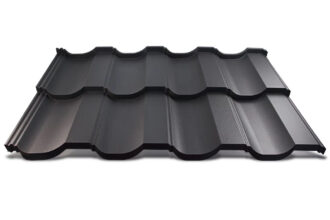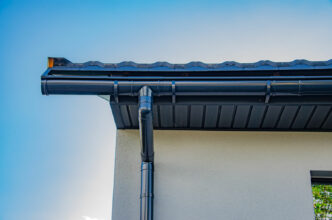Carrots, cucumbers or tomatoes from your own farm are not only delicious, but also healthy ingredients with which you can successfully diversify your diet. All you need is a bit of fertile soil, willingness and commitment. Find out how to grow a modern vegetable garden!
How to arrange a home vegetable garden?
Preparing the land for a vegetable cucumber is very important to ensure that the plants have the right conditions for growth and yield. What steps do you need to take to enjoy a beautiful and productive vital garden?
- Choose the right location – the garden needs a sunny position, so choose a spot where it will receive at least six hours of light a day. Also make sure that the chosen location is adequately watered and has fertile, permeable soil.
- Remove weeds and stones – before planting vegetables, you must remove weeds, stones and plant debris from the previous season. You can do this by hand or with a tiller.
- Prepare the soil for cultivation – vegetables grow best in soil with a pH between 6 and 7. Before planting, it is a good idea to carry out a soil analysis to know the composition of the soil and to determine whether it needs additional fertilisers. The soil should then be enriched with natural fertilisers such as manure or compost.
- Make beds – these can be single rows or raised beds. For raised beds, it is worth using boards or blocks to create an aesthetically pleasing frame.
- Irrigation – your garden needs regular irrigation, so think about a drip irrigation system or supply water regularly with a garden hose.
- Pest and disease protection – plants can be attacked by pests and diseases, so you need to protect them properly. You can use nets or plastic tunnels for this purpose.
- Choose the right vegetables – plant your favourite vegetables in the garden, which are at the same time suited to the climate zone and the current season.
Remember to harvest your ripe crop regularly. This action stimulates the plants to produce more fruit.
Vertical gardening – what is it?
A vertical garden, also known as a living wall, is a type of garden that is placed on a vertical surface, such as a wall or fence. Basically, it is a set of plant containers that are placed in a way that allows the plants to grow in a vertical space. A vertical garden with vegetables is also a beautiful, organic decoration for any space.
Not all plants are suitable for growing in a vertical garden. When it comes to vegetables, among others, the following will work best:
- all types of lettuce (e.g. leaf lettuce, rocket or rocket);
- onion;
- chive;
- parsley leaves.
Plants in a vertical garden need supports to grow properly. Use special nets, pots, stands or wooden frames for this purpose. You can also build your own support out of wood or metal. Remember that vegetables in a vertical garden require the right soil to provide them with the right amount of water and nutrients. You can use ready-made growing mixes or prepare your own soil.
Want to add some charm and colour to your vertical garden? Use additional decorative elements such as lights, ornaments or unusual pots. Arranging a hanging garden can be time-consuming and requires some knowledge of plant cultivation, but it will certainly bring you much satisfaction!
Vegetable garden on the roof – functional and aesthetically pleasing
Creating a vegetable garden on your roof is a great way to make use of undeveloped space, especially if you don’t have a backyard. How to get this done?
- Check if your roof is suitable — not every roof is suitable for growing vegetables. The structure must be strong enough to support the soil and plants. Before starting cultivation, consult a professional to make sure that your roof is safe in this regard.
- Choose the right vegetables — they should be plants that grow well in full sun and low humidity. Some vegetables, such as tomatoes, aubergines and peppers, require a lot of sun and heat, while others, such as lettuce and spinach, grow well in the shade.
- Choose the right containers — they should be light, but at the same time durable and resistant to harmful weather conditions. It is best to choose special containers for roofs or plastic containers.
- Take care of the right soil and irrigation — vegetables need good quality soil to grow properly. Make sure you use the right soil mixture for growing vegetables. Remember also that plants on the roof require regular and increased watering, because they dry faster than those that grow on the ground.
- Install a wind protection system — plants on the roof are especially vulnerable to strong winds that can damage them. To prevent this, install a wind protection system in the form of nets or curtains.
Hydroponic garden – your own vegetables in the block!
The hydroponic garden is based on a specific form of plant cultivation, which consists in the fact that the roots grow in water instead of in traditional soil. In a hydroponic garden, vegetables are placed in special containers with water enriched with nutrients. Plants absorb these substances directly through the roots, and the water is constantly circulated through the system, thus ensuring an uninterrupted supply of nutrients.
You can grow a hydroponic garden outside, inside the apartment or in a greenhouse. One of the main advantages of a hydroponic garden is that it requires much less water than traditional cultivation methods because the water is constantly recirculated. The hydroponic garden also allows precise control of the nutrients that are delivered to the plants, which allows to maintain the high quality of the crops grown.
The biggest disadvantage of hydroponic gardens is their initial cost. Creating such a garden involves an investment in special containers, pump systems and nutrients. A hydroponic garden also requires regular monitoring of nutrients and water pH to ensure the right conditions for the plants. However, if you can be patient and take the time to learn the ins and outs of a hydroponic garden, you can expect stunning results!


